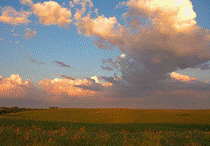
Proceedings of the North American Prairie Conferences
Date of this Version
1989
Document Type
Article
Abstract
Although North American grasslands are diverse and biotically rich, their conservation has never received high priority. As a result, the prairie landscape has all but disappeared. However, one prairie region has retained its essential pre-Columbian features. This is the Nebraska Sand Hills Prairie, a 4.8 million ha stabilized dune region of Holocene origin. Because the Sand Hills lie at the heart of the North American grasslands, their biota is influenced by the adjacent short- and tallgrass prairies and by northern (cool-season) and southern (warm-season) grasslands. In addition, the Sand Hills have their own distinctive sand-dependent biota. Equally important, however, is the heritage conveyed by their uninterrupted landscape and rich cultural history. Although the Sand Hills could be threatened by turning of their erodible soils for agronomic purposes that are not sustainable in the long term, implementation of the Conservation Reserve Program has reinforced historic patterns of sound land management. As a result, privately managed land in the Sand Hills serves a conservation function of global significance. In this region the optimal long-term public and private land use appears to be native prairie.


Comments
Published in Prairie Pioneers: Ecology, History and Culture: Proceedings of the Eleventh North American Prairie Conference, August 7-11, 1988, Lincoln, Nebraska (Lincoln, NE 1989).